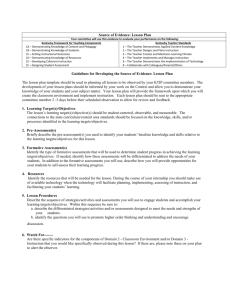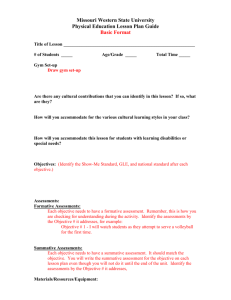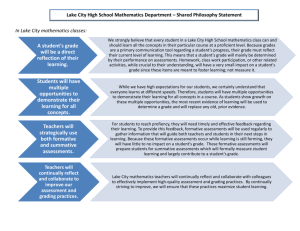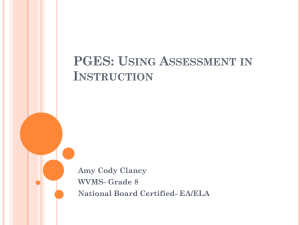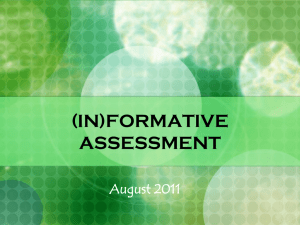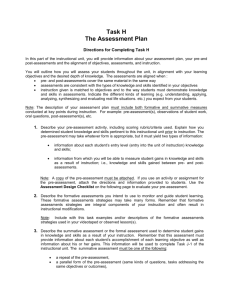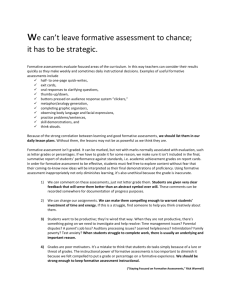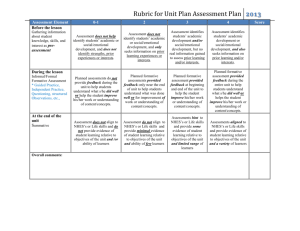Classroom Assessment and Differentiation - NWAEA
advertisement
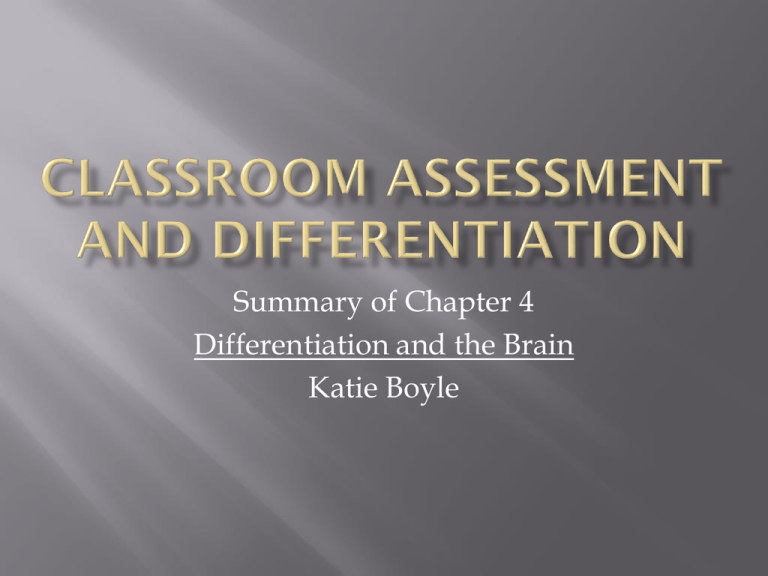
Summary of Chapter 4 Differentiation and the Brain Katie Boyle “If we use the yardstick of supporting student success as a measure of effective assessment practices, then we quickly see that that mystery, harsh judgment, external motivation, and trickery that many teachers experienced in their own schooling fall short. Assessment should not be used to categorize students, but to push their learning forward” (Earl, 2003 as cited on p. 67). Classroom assessments align with the essential knowledge, essential understanding, and essential skills delineated by a high quality curriculum. Students in classrooms that exhibit effective instructional practices are not surprised by the contents of assessments. Effective classroom assessments are appropriate for their intended use: Right kind of assessment to measure what needs to be measured; A fair sample of the content to be assessed; Emphasizes what matters most in the topic of study; Works for the students who will use it. Communication is key! The teacher makes sure that the targets of the assessment are clear throughout the instructional cycle that precedes the assessment but also that the assessment itself models clear communication Effective classroom assessment practice leads to improved instruction—helps teachers identify what they taught well and “what needs work.” Contribute to students’ sense of emotional safety in the classroom by: Helping students understand from the outset of a unit what is valued and what quality looks like; Focusing students on critical outcomes and attributes of quality; Contributing to a growth mindset in students by proving to them that consistent effort=success; Increasing students’ ownership of learning and independence “Assessment is integral to the success of virtually everything that happens in the classroom… Effective assessment practices improve both teaching and learning” (Guskey, 2007, as cited on p. 69). Assessment of Learning Assessment for Learning Assessment as Learning Summative: happens after extended periods of teaching and learning with an eye toward determining who has mastered essential content Examples: short answer tests, essay tests, essay tests, writing assignments, portfolios, authentic problems to solve, public presentations Those that assess rote-knowledge skills; Those that assess higher-level executive functions Formative: its purpose is not to determine who succeeded (or who did not), and to what degree. Provides guidance to the student through specific, descriptive feedback by the teacher Provides guidance to the teacher on how to craft instructional plans to help students either get back on track or move forward Emphasize learning rather than grading; should generally not be graded Has a formative emphasis but gives particular importance to the role of the student in coming to own his/her success as a learner Goal is to help students do the following: Develop self-awareness and skills Ask important questions Construct meaning Use specific teacher feedback to make adjustments Relate their learning to their experiences Make connections Clear articulation of essential knowledge, understanding and skills Curriculum that is aligned with the essentials Instruction and assessment focused on the essentials Teacher feedback to students that is clear and specific The effective use of pre-assessment and formative assessment is the prelude to effective differentiation. The effective use of pre-assessment, formative assessment, and summative assessment is integral to ensuring that students and teachers work from a growth mindset Effective use of pre-assessment strengthens student-teacher connections The effective use of pre-assessment and formative assessment provides relevant info about student readiness, interest, and learning profile Any work students do that is focused on the knowledge, understanding and skills designated as essential for a segment of learning can be formative assessment Effective pre-assessments, formative assessments, and summative assessments provide multiple means of representation, expression, and engagement Providing feedback rather than grades for formative assessment ensures students who struggle with the content have adequate practice time before their work is judged. Using assessment for learning increases student ownership of learning, student performance, and student learning efficacy. Diagnostic/Pre-Assessments: NO Formative Assessments: Rarely Summative Assessments: YES A report card provides a snapshot of a person who is still developing; is not the final word on the student’s journey as a learner The teacher Has a growth mindset Establishes a positive learning environment Has learning goals that are focused on understanding Communicates learning goals clearly to students Teaches with those goals at the center of instruction Uses effective classroom assessment practices Modifies instructional plans to address gaps between students’ current learning status and essential goals Questions for Teachers to Ask to Determine Whether an Assessment is Effective (Reproducible) What are the kinds, purposes, and examples of assessments in a differentiated classroom?

